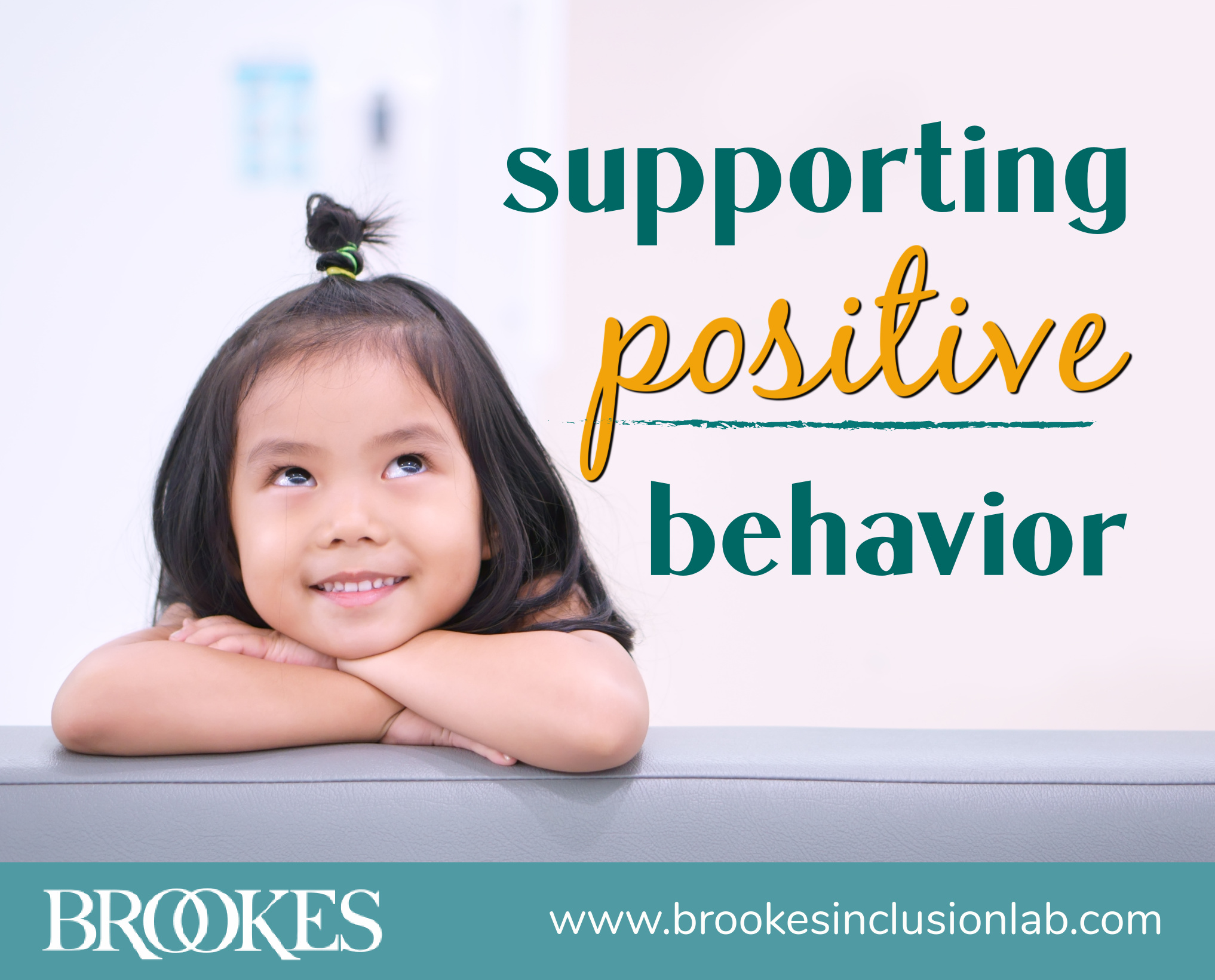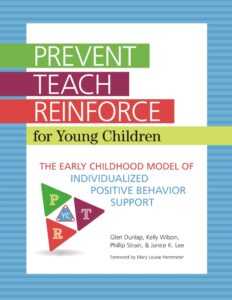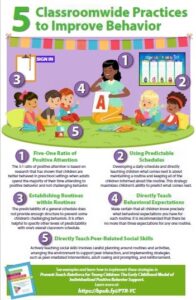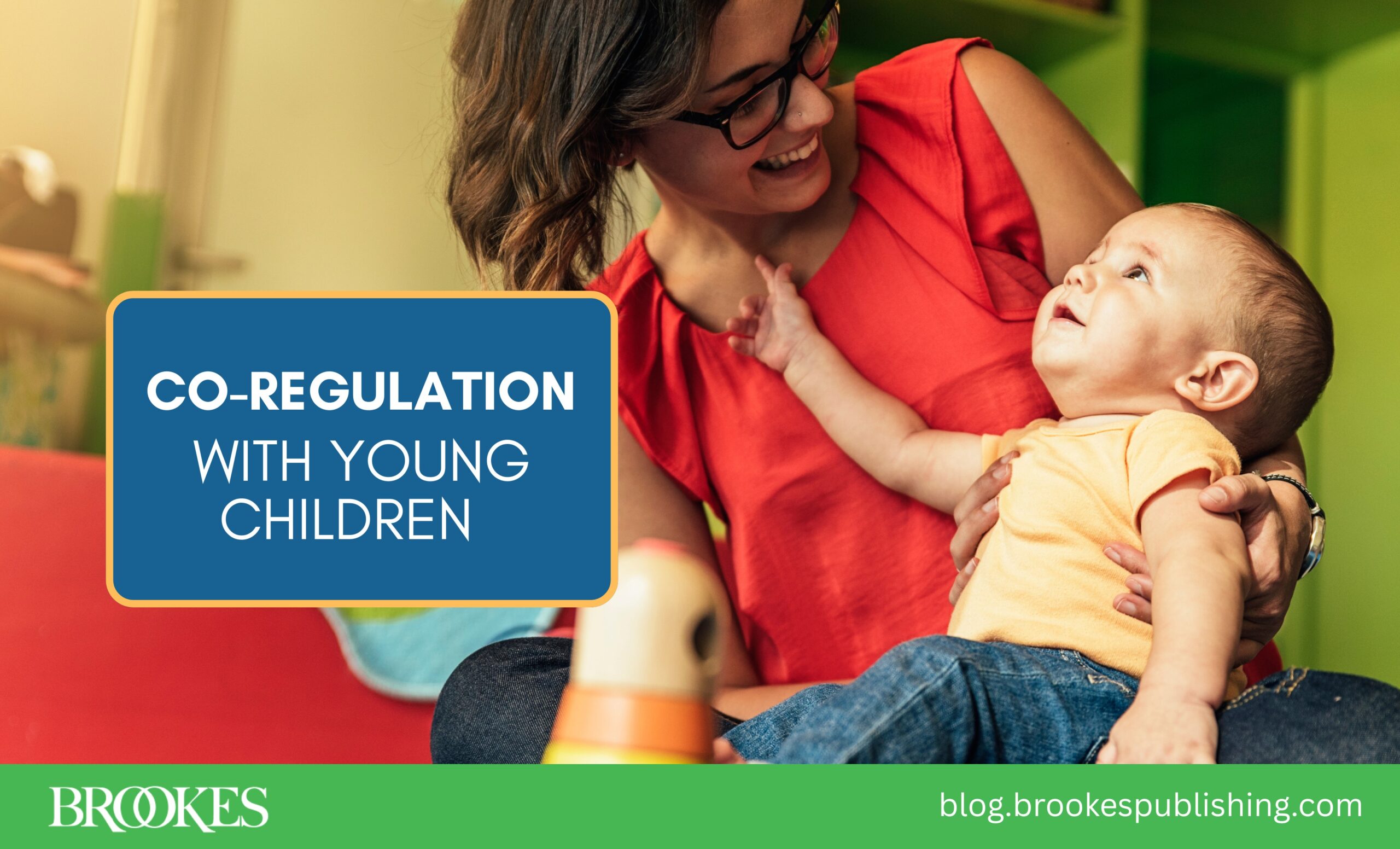5 Universal Practices to Support Young Children’s Positive Behavior
November 17, 2020
 What are some universal classroom practices you can use to help avoid or resolve challenging behavior in your young learners? Excerpted and adapted from the book Prevent-Teach-Reinforce for Young Children by Glen Dunlap, Kelly Wilson, Phillip Strain, & Janice K. Lee, this post gives you 5 general guidelines and specific tips to follow when you’re teaching young children. Effective for children with and without identified behavior challenges, these five practices will help you and the rest of your team lay the groundwork for positive behavior within a supportive learning environment.
What are some universal classroom practices you can use to help avoid or resolve challenging behavior in your young learners? Excerpted and adapted from the book Prevent-Teach-Reinforce for Young Children by Glen Dunlap, Kelly Wilson, Phillip Strain, & Janice K. Lee, this post gives you 5 general guidelines and specific tips to follow when you’re teaching young children. Effective for children with and without identified behavior challenges, these five practices will help you and the rest of your team lay the groundwork for positive behavior within a supportive learning environment.
Embrace the Five-One Ratio of Positive Attention
The 5:1 ratio of positive attention is based on research that has shown that children are better behaved in preschool settings when adults spend the majority of their time attending to positive behavior and not correcting or commenting on challenging behavior.
When you’re implementing the 5:1 ratio, remember that:
- All members of your team must contribute to maintaining the 5:1 ratio.
- It’s important to have a specific goal for your team, and a concrete symbol or reminder will help. For example, if your goal is for your team to catch a student behaving appropriately 30 times during a three-hour preschool day, your team member might wear carpenter’s aprons with 10 poker chips placed in one side pocket, and move a chip to the other pocket each time they make a positive comment to the student about their behavior.
- The only interactions that count toward the “5” column are encouraging comments to the child about their behavior. Directions, requests, or questions, even if stated in a positive tone, count in the “1” column.
- Even if shifting to the 5:1 ratio by itself doesn’t result in a satisfactory change in challenging behavior for specific children, remember that it’s still a necessary step toward your goal.
Use Predictable Schedules
Developing a daily schedule and directly teaching children what comes next is about maintaining a routine and keeping all of the children informed about the routine. This strategy maximizes children’s ability to predict what comes next.
When you’re implementing a schedule, remember to:
- Design your schedule so that you can remove an item to indicate its completion, cover up the item to indicate its completion, or provide other ways to indicate that activities are finished.
- Use words and pictures to represent entries on the schedule.
- Prominently display the daily schedule at children’s eye level.
- Review the schedule daily with the whole group and with individual children before transitions.
- Preview upcoming changes with children in advance.
- Keep things new and exciting—a predictable schedule doesn’t mean doing exactly the same thing every day.
Establish Routines within Routines
The predictability of a general schedule may not provide enough structure to prevent some children’s challenging behaviors. You’ll probably find it helpful to specify other levels of predictability within your overall classroom schedule. For example, during the larger routine of daily sign-in, you can create a smaller routine in which you approach a child who needs extra support, hand them a marker, and say, “Time to sign in! Pick a friend and go sign in together.”
As your team works to create these routines within routines, remember to:
- Think carefully about the developmental goals you have for a general routine (e.g., peer interaction, language, fine motor skills), and make sure the routines within the routine actually provide opportunities for children to practice skills related to the goal.
- Mediate with picture sequences. Picture sequences are a permanent reminder for children regarding your behavioral expectations, and they help children understand each step of each routine.
- Directly teach the sequences using fun activities such as puppets, role-playing with adults purposefully making mistakes, and children taking turns modeling for each other.
Directly Teach Behavioral Expectations
Working as a team, establish expectations for classroom behavior and make sure all children know exactly what expectations you have for each routine. Keep these tips in mind as you go:
- Try to have no more than two or three expectations for any one routine. For example, your goals for arrival time might be “active engagement with materials” and “peer social interactions,” and your opening circle-time goals might be “maintaining attending behavior (sitting in the group)” and active participation (watching, motor movement, verbal participation).”
- Take photos or make drawings of the children in your class demonstrating all the expectations. Post the pictures strategically around the classroom to remind children of the expectations and redirect them to desired behavior when they’re not following the rules.
- Make sure that all children have an opportunity to practice behavioral expectations each day. And practice expectations beforehand, because practicing after rule infractions may be perceived as punitive by your students.
- When you notice an episode of rule following, make a point to publicly acknowledge it.
- Adjust the level of expectations across the year. For example, engagement at opening circle time for a 3-year-old group may be five minutes or less at the beginning of the year, but you might double that by the end of the year.
Directly Teach Peer-Related Social Skills
Embedded in your daily schedule are many opportunities to support and encourage peer interactions during natural activities and routines. Actively teaching social skills involves careful planning, arranging the environment to support peer interaction, and implementing strategies such as peer-mediated interventions, adult cueing and prompting, and reinforcement.
Take a look at this classroom example:
Instead of having an adult sit at the snack tables with the children, the adults designate a snack captain and drink captain for each table. Monique has been selected as the snack captain for her table. Once all the children are seated and they have sung their snack song, Ms. Judy gives Monique a stack of napkins. Adults then cue the children who need prompting to ask Monique for a napkin. Once the napkins are passed out, Monique is given a plate with the snacks on it. Again, the adults cue the children to ask Monique for a snack, and she passes the plate to each child so he or she can take a snack. Meanwhile, Marcus, the drink captain, is given the cups and a small pitcher of juice. While some children are asking Monique for snack, others are asking Marcus for juice. Teachers facilitate these interactions and make sure everyone asks for snack and juice—whether it is by verbalizing a request; gesturing; or using pictures, signs, or other ways to communicate.
As you think about and develop rich peer interaction opportunities like these, ask yourself the following questions:
- What social skills goals do I have for the individual children in my class? What are my expectations for the children in my care?
- What do I typically do with or for the children? Could children pair up to do this job instead?
- Is this activity something that frequently happens? (This question is important because you want to create opportunities that occur often, in order to provide a wealth of opportunities over the course of a day, week, month, and school year.)
- Can I ensure that support will be available so that all children can be successful in carrying out this task?
Implement these five universal classroom practices faithfully, and your team will likely see a dramatic reduction in challenging behavior. To learn more about how to implement these universal practices—and provide individualized support for children who need more—be sure to check out Prevent-Teach-Reinforce for Young Children: The Early Childhood Model of Individualized Positive Behavior Support. And for a convenient one-page reminder of the practices outlined in this post, download and print this colorful PDF handout!
GET THE HANDOUT

DOWNLOAD NOW
GET THE BOOK
 Resolve persistent behavior challenges in early childhood settings with this practical guide to the popular Prevent-Teach-Reinforce for Young Children (PTR-YC) model, ideal for strengthening social-emotional development in preschool children. Includes planning forms and worksheets such as a Goal Sheet, Daily Log, Behavior Rating Scale, Intervention Menu, and Team Implementation Guide.
Resolve persistent behavior challenges in early childhood settings with this practical guide to the popular Prevent-Teach-Reinforce for Young Children (PTR-YC) model, ideal for strengthening social-emotional development in preschool children. Includes planning forms and worksheets such as a Goal Sheet, Daily Log, Behavior Rating Scale, Intervention Menu, and Team Implementation Guide.




Write a Comment
Your email address will not be published. Required fields are marked *
comments
Jacob Noah says
Really informative read! I agree that paying attention to the behavior of your children and supporting their positive actions is much better than criticizing them. Even outdoor activities help in building social skills such as patience, attention, and compassion in children.
Post a Comment